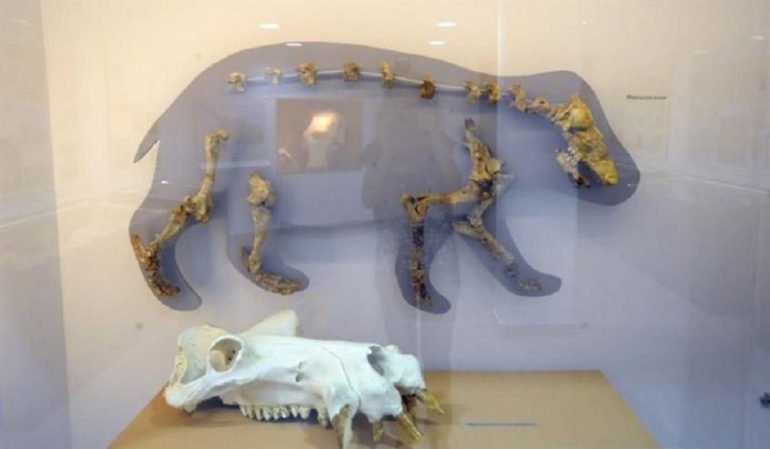Dwarf elephants and hippos were the first tourists to arrive in Ayia Napa from Africa, as evidenced by archaeological finds in the Paphos area.
75.000 years ago the Mediterranean Sea was shallow and easy to cross on foot from Africa to Ayia Napa. After Ayia Napa, they seem to have moved to other areas of Cyprus.
According to the newspaper "Phileleftheros", in June 2005 in the hills of Ayia Napa, southwest of Cape Greco, a part of the skull of a dwarf elephant was found, which according to paleontologists, lived on our island at least 75.000 years ago.
This important discovery was historically connected with the fact that during the British occupation, according to historical texts, in 1903 it became known that the above two mammals lived in Cyprus. The historical retrospect, with the help of the staff of the Maritime Museum in Ayia Napa, however, extends to an even greater depth and explains in detail the course of the dwarf elephants and hippos to the shores and mountain peaks of Ayia Napa.
According to archaeologists and paleontological researchers, bones and fossils of the oldest proboscideans in the region have been found in Egypt, where they are believed to have lived 30 million years ago. Apparently, pygmy elephants migrated in search of food apparently in many areas of the Mediterranean. Fossils have also been found in our neighbor Tilos, but also in the relatively more distant Malta. Also, such fossils have been found in Indonesia and as far away as California and Japan.
Relatives of the two mammals that lived in Cyprus during the above period, were found through fossils in Sicily, Sardinia and Mallorca. This fact indicates that the dwarf elephants arrived on our island, initially approaching the shores of Ayia Napa, in the context of an international migration
The scientific name of the hippos in Cyprus is phanourios minor. The first skull of this kind was found by the archeological dig in 2008. That is, three years after the discovery of part of the dwarf elephant skull in the same area.
To the logical and big question, why did the dwarf elephants disappear from Cyprus, the scientists tried and have to give an answer. The arrival of the human species in Cyprus, the natural climatic changes gradually in a constantly changing planet, as well as the eruption of the volcano of Santorini, played a role in this ending of these two specific mammals.
This important development for the history of Ayia Napa and more broadly of Cyprus, came to light in the context of an educational excavation program of the Department of Geology and Geoenvironment of the University of Athens. Bones in an assembled form, that is, as they were of dwarf elephants and hippopotamuses, can be seen in the Sea Museum of the Municipality of Ayia Napa, but also in the Environmental Center of the Ministry of Agriculture in Cabo Greco.
